#The creature not the desert
Explore tagged Tumblr posts
Text
I feel like talking about brownies!
These pint-sized house fairies have woven their way into the fabric of Celtic mythology, leaving behind a trail of delightful stories and enchanting traditions.
The origins of brownies can be traced back to ancient Scotland, where they were believed to be helpful spirits dwelling in homes and farms. The name "brownie" is thought to have derived from the Old English word "brounie," meaning "small or dusky brown creature." In appearance, brownies are often depicted as small, humanoid beings with wrinkled faces, adorned in earth-toned clothing.
Legend has it that brownies possess a mysterious and beguiling power - the ability to complete household chores under the cloak of darkness. While humans slumbered, these mischievous creatures would tidy up, mend clothing, and even assist with baking. However, there was a catch: brownies despised being watched or rewarded for their work. If caught, they would vanish forever, leaving behind only a faint whisper of their magical presence.
One beloved tale recounts the story of a weary farmer who found himself struggling to keep up with his never-ending tasks. Late one night, he decided to place a small bowl of cream and a handful of oats by the hearth, hoping to entice the fabled brownies of the land. To his astonishment, the next morning, his chores were completed, and a faint voice echoed through the air, saying, "Wee folk are pleased, so reward we shall not take."
Brownies were not just known for their helpful nature; they were also protectors of households and guardians of children. Stories are told of brownies who would watch over sleeping babes, ensuring they were safe from harm. Mothers would leave out gifts of milk or honey as tokens of gratitude, entrusting their little ones to the care of these mystical creatures.
Interestingly, the concept of house fairies similar to brownies can be found in various cultures across the world. The Scottish brownie shares similarities with the English hobgoblin, the German kobold, and the Scandinavian tomte. It seems that the importance of these tiny, benevolent spirits transcends borders and connects humanity through a shared fascination with the magical and the unseen.
While today, the belief in brownies may have become less prominent, their presence lingers in our hearts and minds. They remind us to appreciate the small joys in life, to find the beauty in ordinary things, and to cherish the magic that can be found within our own homes.
So, the next time you find a mysteriously folded shirt or a sparklingly clean kitchen counter, remember to thank the invisible helpers who might just be the delightful brownies, dancing through the night and bringing a touch of whimsy to your cozy abode.
Sources: - Briggs, Katharine. "An Encyclopedia of Fairies". Pantheon Books, 1976. - Campbell, John Gregorson. "Superstitions of the Highlands and Islands of Scotland". James MacLehose and Sons, 1900. - McNeill, F. Marian. "The Silver Bough - Volume 4: A Calendar of Scottish National Festivals, Halloween to Yule". Stuart Titles Limited, 1995.
#brownies#The creature not the desert#Thigh I would love to have both#Folklore#mythical beings#such fascinating creatures
5 notes
·
View notes
Text


These f f f rreaks
#mcyt#mcyt fanart#buggbox art#hermitcraft#uhhh not technically traffic shipping but its sort of up to you#Scar is so me you guys don't even understand#I feel a physic connection to his little Minecraft man#I love love love drawing him#:J#trafficblr#for you lovely desert duo creatures#<3#traffic series#hermitblr#gtws fanart#gtwscar#goodtimeswithscar#grian mc#grian fanart#grian#life series#traffic smp#wild life smp#desert duo#let grian say fuck
1K notes
·
View notes
Text

A common site in these dry rocky areas is the Velumignus. Their immobile bases send tendrils deep underground in search of water, while the photosynthetic flattened upper portions can swivel to accommodate for light and wind direction. Reaching a height of over fifteen feet, these silent sun-catchers often serve as way-finding posts to creatures journeying through the High Desert.
#space#alien#creature#art#creature design#worldbuilding#exobiology#astrobiology#digital art#drawing#speculative evolution#desert#sky#rocks
570 notes
·
View notes
Text



"My jeans split right down from crotch to knee. It was just a reminder of the times we are in. You can make all your best plans but it’s one foot in front of the other with a lot of wind blowing where you probably wish it wasn’t." - Hamish Linklater [x]
#midnight mass#hamish linklater#father paul hill#monsignor john pruitt#dilfsource#mancandykings#userangelic#usersnat#userbrittany#usercy#flanaverse#this has probably been done to death but also idk....i am a simple creature.........#but also where did those JEANS COME FROM#YOU WERE A DEMENTIA RIDDLED 80 YEAR OLD IN A DESERT CAVE TWO DAYS AGO WHERE DID YOU COP THE SKINNY JEANS#riotgifs
514 notes
·
View notes
Text
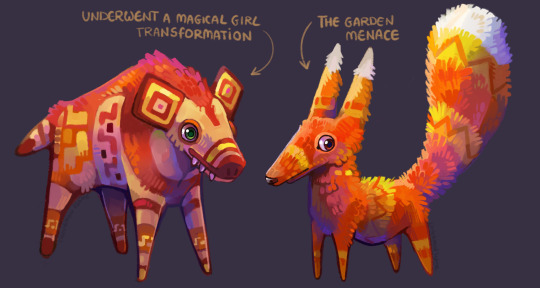
Hello I am back with more Viva Piñata doodles! Turns out if you think enough about fluffy piñatas you can force your way through art block (at least for a while)
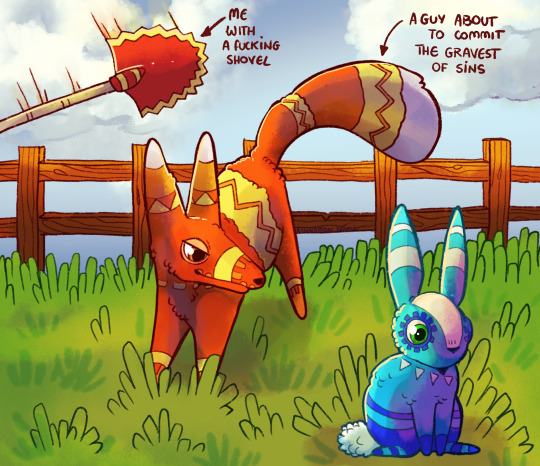
The typical Viva Piñata experience, I love you Pretztail but why are you like this I drew so many Pretztail as a "do over" of my first Viva Piñata drawing from 2018

that's when it all started
#For anyone not in the know a Pieena can be made from a Pretztail that has been gifted a bone#after that you can get it at the desert#also additional piñata lore#a Pretztail CAN AND WILL haunt your garden if you have a bunnycomb in it#they won't stop coming#they won't stop attacking them#the only way to end it is getting the master romancer achievement for pretztail and then banning them from appearing#despite this I still love those little dudes#even if they are rascals#me talking about Viva piñata designs : this is the topest tier of creature design#me actually drawing the designs : oh god what does that pattern look like from this side#this is for all the people how still somehow reblog my previous piñata drawings and comment about how they miss the games#I do too#so here I am with doodles#viva piñata#viva pinata#vp#viva pinata tip#pretztail#bunnycomb#pieena#art#cinnamon's doodles
633 notes
·
View notes
Text
Lonely river spirit Scar who gently pushes any mending books away from Grian’s fishing pole because he wants him to keep coming back. If the visitor catches one he’ll leave, and it’s been so long since Scar had company
#is this anything#anyway <3#creature scar and normal guy grian is an underrated dynamic I think :3#goodtimeswithscar#grian#desert duo#🐦⬛
599 notes
·
View notes
Text

Traveling across miles of blazing hot sand a golden sand bauble vigorously searches for food. Its unique golden carapace helps reflect the sun's rays and allows it to hunt during the heat of the day. while the large pale organ in the center of the bauble helps with temperature regulation and moisture retention.
#my art#illustration#alien creature#alien#scifi#scifi art#science fiction#speculative zoology#speculative biology#creature design#creature#gold#desert#sand#spider#small#wildlife#wildlife art#speculative evolution#bug#monster#xenobiology
245 notes
·
View notes
Text
one day you think: i want to die.


and then you think, very quietly: actually. actually.


i think i want a coffee.
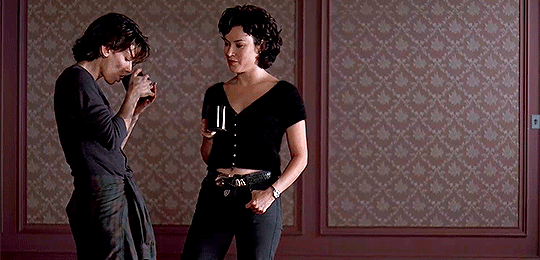
a nap.


a sandwich.


a book.

and i want to die turns day by day into

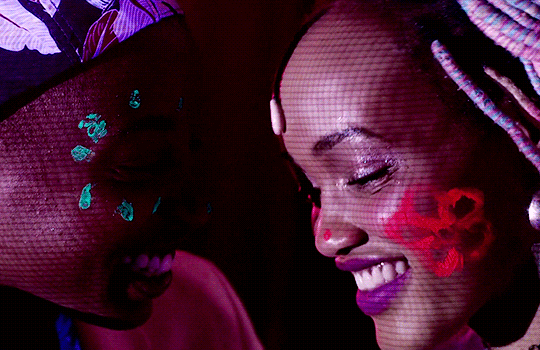
i want to go home,
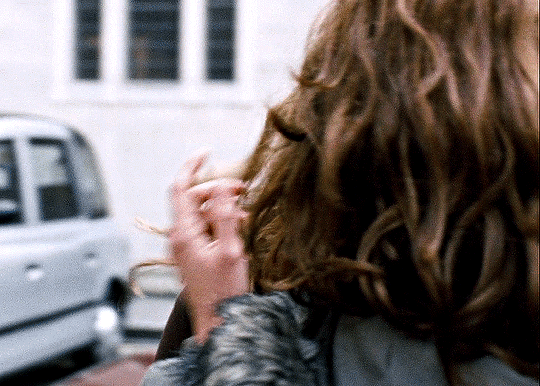

i want to walk in the woods,

i want to see my friend,


i want to sit in the sun,

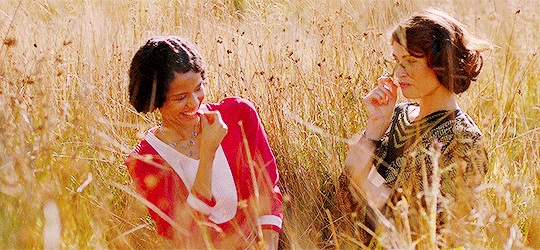
i want a cleaner kitchen,

i want a better job,
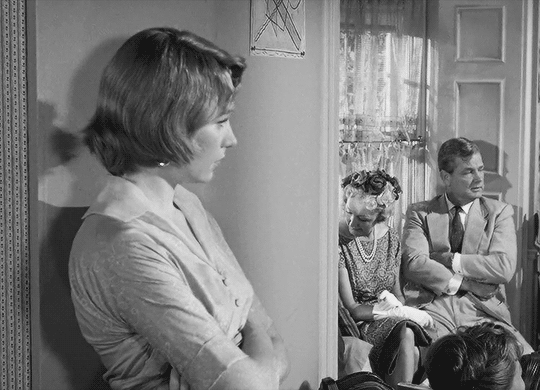

i want to live somewhere else,

i want to live.



(poem from duckbunny, but with a lesbian twist. post inspired by bittersweetresilience.)
#lesbian#wlw#children of divorce#madchen in uniform#go fish#desert hearts#bound#disobedient#portrait of a lady on fire#saving face#glee#booksmart#but im a cheerleader#rafiki#imagine me & you#the haunting of bly manor#heavenly creatures#alien#tootsie#the incredibly true adventure of two girls in love#summerland#the children's hour#fried green tomatoes#thelma and louise#black mirror
735 notes
·
View notes
Text
youtube
If you haven't seen this yet... see it now
#queer cinema#chappell roan#pose#but I'm a cheerleader#pariah#velvet goldmine#rafiki#bound#carol#my own private Idaho#Brokeback mountain#and then we danced#portrait of a lady on fire#the adventures of priscilla queen of the desert#rocky horror picture show#fried green tomatoes#the boys in the band#happy together#rope#rebel without a cause#the children's hour#everything everywhere all at once#paris is burning#the watermelon woman#the miseducation of cameron post#pride#the perks of being a wallflower#moonlight#kajillionaire#heavenly creatures
189 notes
·
View notes
Text

Been following @dingodoodles and Co's Fool's Gold Sands podcast and haha, I wanted to try drawing Sandra with all 10 of her heads! ('cause I think she's very neat.) Sorta imagine they're situated as a set of 3, 4 and then 3 again.
#fools gold dnd#dnd podcast#dnd fanart#fan art#creature art#hydra#sand hydra#desert#digital drawing#digital art#fantasy art#art#Chari Artist#Chari Was Here
320 notes
·
View notes
Text

Dasymutilla vestita, a species of velvet ant, in southern New Mexico, US. Despite their name, velvet ants are actually wasps. The females, like the one in this picture, don't have wings and can inflict an extremely painful sting. However, they're non aggressive and will only sting in self defense. Males have wings and cannot sting.
#velvet ant#Dasymutilla vestita#cow killer ant#wasps#hymenoptera#fuzzy#bugs#nature#nature photography#biodiversity#animals#bugblr#arthropods#inaturalist#entomology#insect appreciation#fuzzy sweater#ant#except not an ant#cute bugs#no touchy#new mexico#desert creatures#Mutillidae#desert#southwest#weird nature#biology#zoology#animal facts
83 notes
·
View notes
Text

A desert dragon protects her eggs from the intense sun
369 notes
·
View notes
Text




In my orange phase.
#space#art#alien#creature#astrobiology#exobiology#creature design#speculative evolution#worldbuilding#digital art#xenobiology#orange#desert#nature#scientificillustration#bugs
364 notes
·
View notes
Note
can i subject your scar and grian to psychological torture like conditioning them to be afraid of mumbo jumbo
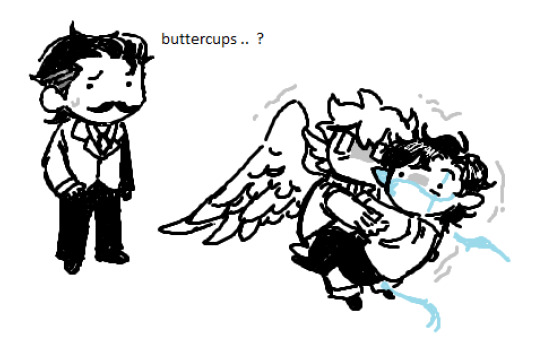
i cant believe ur involving mumbo in this now
518 notes
·
View notes
Text
A Survivor in Hell:
Dante's Dumingo
Perfectly adapted for flying across the harsh Ourean Mountains interior, the "Abominharenas", and feeding on scalding hot brine pools, Dante's Dumingo not only survives but thrives in the most inhospitable environment on the surface of Artechocene Earth

Dante's Dumingo, as is name implies, is a Dumingo, an anatid in the family Anabalaenidae or the "Baleen-beaked Ducks". They are a family consisting of many migratory and gregarious species in several genera, all adapted for filter feeding in various environments. The genus Infernanas is particularly known for liking more extreme environments than its relatives, like soda lakes deep in the Sahara, boiling hot pools in remote islands up in the north Pole, or brine pools up in the highest mountain ranges.
But to survive in the Ourean mountains and surrounding deserts, this species had to adapt for every inhospitable conditions known, and yet, it has been able to survive every one of them. It's thick coat of white feathers is a great insulator against both the cold at night and at great altitudes, and against the scorching temperatures of the day. The clearer feathers on its back also help it deflect most sunlight that hits its body, and the dark patches around its eyes help it see with the glaring sunlight. Its thick skin is able to withstand scalding water and impressively high ion concentrations of different species. Its physiology and filtering systems also allows it to drink extremely water of high temperature, salinity, acidity or alkalinity.
#art#illustration#speculative biology#clip studio paint#speculative evolution#birds#duck#flamingo#mediterranean#future evolution#creature design#desert#brine lake
127 notes
·
View notes
Text

Pets :]
#grians a cat bird hybrid#based off a desert tawny owl in this specific instance#it changes with every season this is my 3rd life design#scars a vex and a llama#you should totally ask me what creatures ive made everyone btw its very funny#uhh tagging time#art#my art#pasta scribbles#life series#trafficblr#gtws#grian#desert duo
49 notes
·
View notes